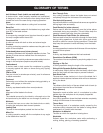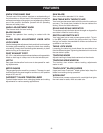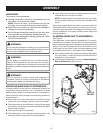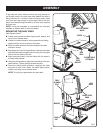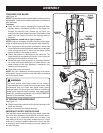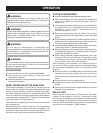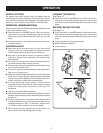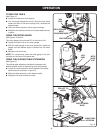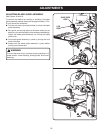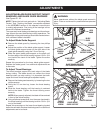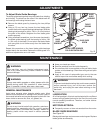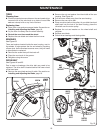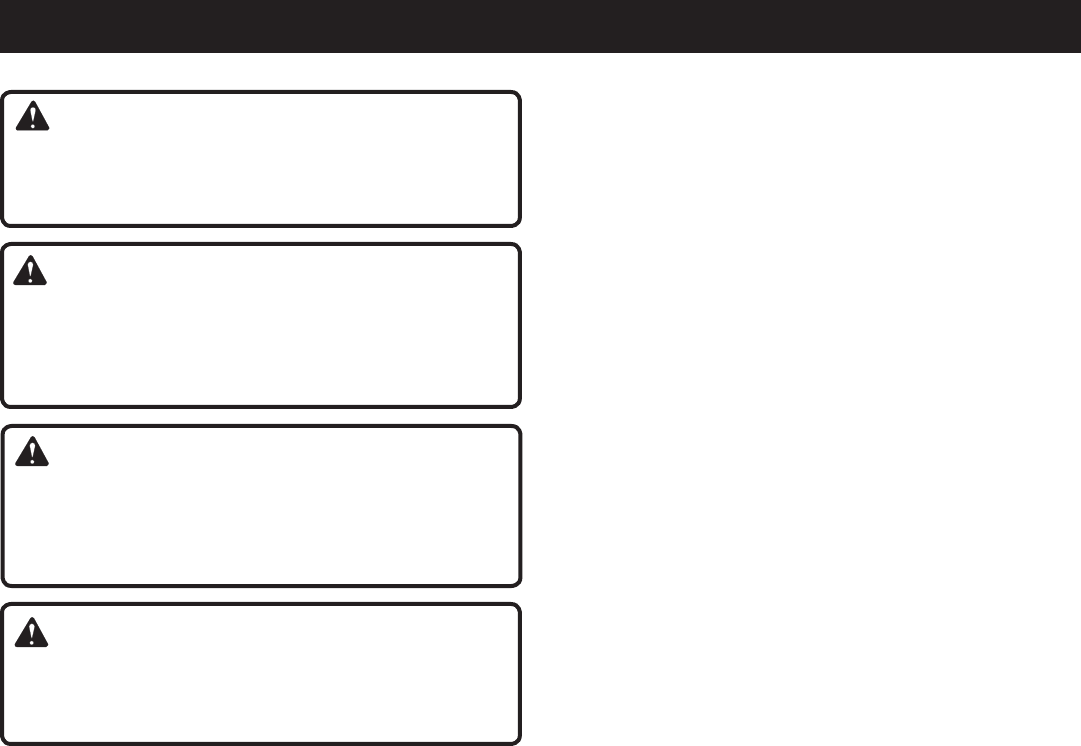
16
OPERATION
WARNING:
Do not allow familiarity with tools to make you care-
less. Remember that a careless fraction of a second is
sufficient to inflict serious injury.
WARNING:
Always wear safety goggles or safety glasses with side
shields when operating power tools. Failure to do so
could result in objects being thrown into your eyes
resulting in possible serious injury.
WARNING:
Do not use any attachments or accessories not
recommended by the manufacturer of this tool. The use
of attachments or accessories not recommended can
result in serious personal injury.
WARNING:
To avoid blade contact, adjust the blade guide assembly
to just clear the workpiece. Failure to do so could result
in serious personal injury.
APPLICATIONS
You may use this tool for the purposes listed below:
Scroll cutting and circle cutting of wood and wood
composition products
Various straight line cutting operations in wood and wood
composition products
BASIC OPERATION OF THE BAND SAW
A band saw is basically a “curve cutting” machine that can
also be used for straight-line cutting operations like cross
cutting, mitering, beveling, compound cutting, and resaw-
ing. When using the band saw for straight line cutting, the
user can install a fence using an appropriately sized piece of
wood clamped to the table with “C” clamps. It is not capable
of making inside or non-through cuts.
This band saw is designed to cut wood and wood composi-
tion products only.
Before starting a cut, watch the saw run. If you experience
excessive vibration or unusual noise, stop immediately. Turn
the saw off, remove the switch key, and unplug the saw. Do
not restart until locating and correcting the problem.
CUTTING PROCEDURES
Hold the workpiece firmly against the saw table.
Use gentle pressure and both hands when feeding the
work into the blade. Do not force the work; allow the
blade to cut.
The smallest diameter circle that can be cut is determined
by blade width. A 1/4 in. wide blade will cut a minimum
diameter of 1-1/2 in.; a 1/8 in. wide blade will cut a
minimum diameter of 1/2 in.
Keep your hands away from the blade. Do not hand
hold pieces so small your fingers will go under the blade
guard.
Avoid awkward operations and hand positions where a
sudden slip could cause serious injury from contact with
the blade. Never place hands in blade path.
Use extra supports (tables, saw horses, blocks, etc.) when
cutting large, small or awkward workpieces.
Never use a person as a substitute for a table extension
or as additional support for a workpiece that is longer or
wider than the basic saw table.
When cutting irregularly shaped workpieces, plan your
work so it will not pinch the blade. For example, a piece
of molding must lay flat on the saw table. Workpieces
must not twist, rock or slip while being cut.
When backing up the workpiece, the blade may bind in
the kerf (cut). This is usually caused by sawdust clogging
the kerf or when the blade comes out of the guides. If this
happens:
Place the switch in the OFF position. Wait until the saw
has come to a full and complete stop, then remove the
switch key from the switch assembly. Store key in a safe
place.
Unplug the saw from the power source.
Wedge the kerf open with a flat screwdriver or wooden
wedge.
Open front cover and turn the upper wheel by hand while
backing up the workpiece.
RELIEF CUTS
Relief cuts are made when an intricate curve (too small
a radius for the blade) is to be cut. Cut through a scrap
section of the workpiece to curve in pattern line then carefully
back the blade out. Several relief cuts should be made for
intricate curves before following the pattern line as sections
are cutoff of curve “relieving” blade pressure.



